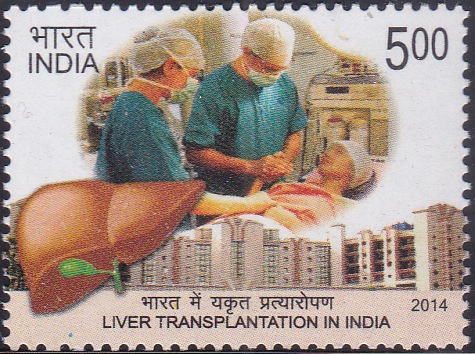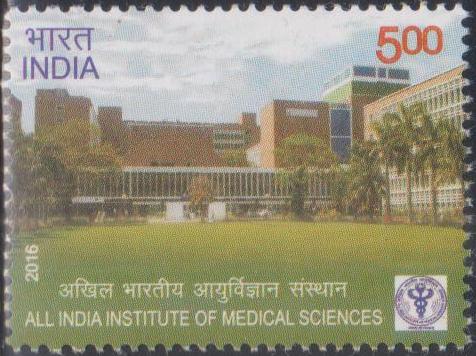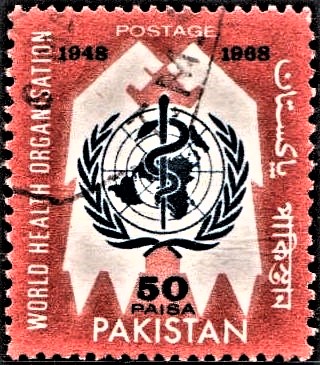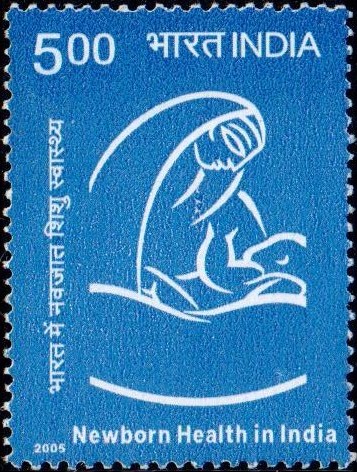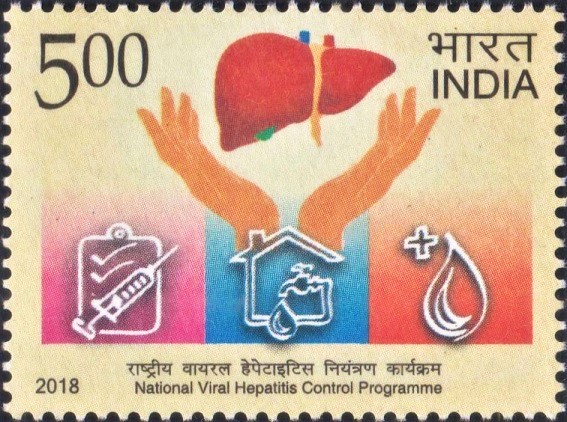
National Viral Hepatitis Control Programme
A commemorative postage stamp on the Launch of the NHVCP on occasion of World Hepatitis Day :
 Issued by India
Issued by India
Issued on Jul 28, 2018
Issued for : Department of Posts is pleased to issue a Commemorative Postage Stamp on the launch of National Viral Hepatitis Control Programme.
Credits :
Stamp/FDC/Brochure : Sh. Suresh Kumar
Cancellation Cachet : Smt. Nenu Gupta
Type : Stamp, Mint Condition
Colour : Multi Colour
Denomination : 500 Paise
Stamps Printed : 600750
Printing Process : Wet Offset
Printer : Security Printing Press, Hyderabad
About :
- Viral hepatitis is increasingly being recognized as a public health problem in India. Etiological agents implicated are Hepatitis A, B, C, D and E viruses that can lead to acute, chronic or sequel of chronic infection. Hepatitis A Virus (HAV) and Hepatitis E Virus (HEV) are transmitted by faecal-oral route and Hepatitis B Virus (HBV) and Hepatitis C Virus (HCV) are transmitted by per-cutaneous and per-mucosal routes.
- HAV and HEV are important causes of acute viral hepatitis and acute liver failure. Available literature suggests that HAV is responsible for 10-30% of acute hepatitis and 5-15% of acute liver failure causes of India. It is further reported that HEV accounts for 10-40% of acute hepatitis and 15-45% of acute liver failure. Hepatitis B surface antigen (HBsAg) positively in the general population ranges from 1.1% to 12.2%, with an average prevalence of 3-4%. Anti-Hepatitis C virus (HCV) antibody prevalence in the general population is estimated to be between 0.09-15%. It is estimated that there are 40 million people chronically infected with Hepatitis B and based on some regional level studies, it is estimated that there are 6-12 million people with Hepatitis C in India. Chronic HBV infection accounts for 40-50% of HCC and 20-30% cases of cirrhosis in India whereas chronic HCV infection accounts for 12-32% of hepatocellular carcinoma (HCC) and 12-20% of cirrhosis.
- India is committed to achieve the Sustainable Development Goal 3.3 which aims inter alia to ‘…. Combat viral hepatitis’. The Government of India is a signatory to the resolution 69.22 endorsing the Global Health Sector Strategy on Viral Hepatitis 2016-2021 at 69th World Health Assembly towards ending viral hepatitis by 2030. Several components to address the issue of viral hepatitis are currently existing in the different programs of Government of India like immunization for hepatitis B, Swachh Bharat Mission, safety of blood and blood products, safe drinking water and sanitation, that are directly or indirectly related to the response to viral hepatitis. There is a need for focus on integration of the existing programs towards awareness, prevention and treatment for viral hepatitis and improve services for diagnosis and treatment of hepatitis.
- With this objective in mind, Government of India is launching the National Viral Hepatitis Control Programme. Immunization with hepatitis B vaccine with focus on the birth dose for the newborn would be a critical strategy. Vaccination of health care workers and high risk populations with hepatitis B vaccine would go a long way in achieving elimination of hepatitis B in a cost effective manner.
- The aim of the initiative is to reduce morbidity and mortality due to viral hepatitis. The key strategies include preventive and promotive interventions with focus on awareness generation, safe injection practices, sanitation and hygiene, safe drinking water supply, infection control and immunization, co-ordination and collaboration with different Ministries and Departments; increasing access, promoting diagnosis and providing treatment support for patients of hepatitis B & C; building capacities at national, state, district and sub-district levels up to Primary Health Centres (PHCs) and health and wellness centres in a phased manner.
- The Government of India is committed to provide free treatment of viral hepatitis B & C and management of Hepatitis A and E through availability of decentralized treatment and diagnostic services to assist easy access.
- The program further includes establishing surveillance mechanisms, determining the burden of disease, delivering services through the existing health care system with district management structure as core, using NHM platform by deploying required manpower at the service delivery sites; establishing a program management structure at national and state level with indicative staffing; upgrading and strengthening the existing laboratories to perform the requisite diagnostic testing, strengthening treatment facilities including human resource, equipment, training, supervision, procurement and supplies etc. Implementation will be prioritized based on the endemicity of viral hepatitis in the states and scaled up gradually.
- Text : Based on information received from the proponent.
Subscribe
Login
0 Comments


